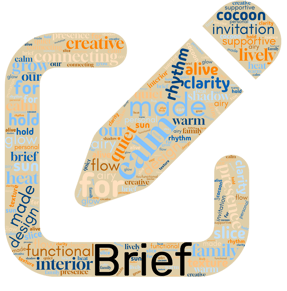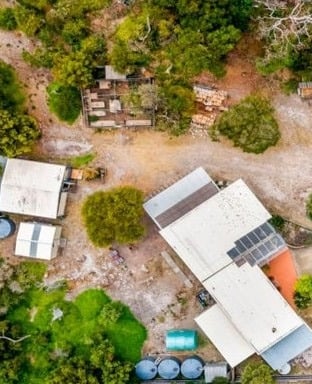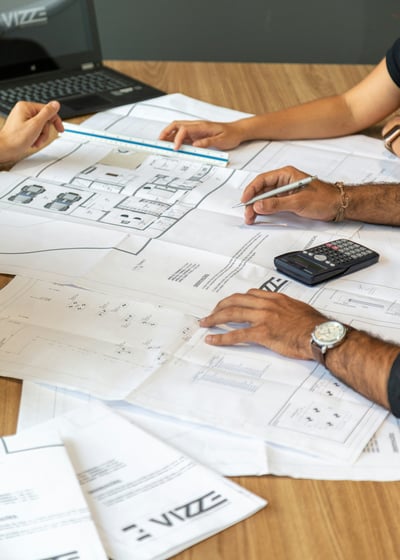How to Write an Interior Design Brief That Actually Reflects You
INTERIOR DESIGN PRINCIPLESREFLECTIONS
6/13/2025
How do homes start? Not with walls, but with words.
Often, it begins as a conversation. A sketch. A gut feeling. But somewhere between the feeling and the finished space, we need a way to hold onto what matters.
That’s where a design brief comes in.
A design brief isn’t a list of furniture. It’s a snapshot of your life, values, rhythms, and hopes — translated into something you and your designer (or future self) can return to. It becomes a quiet anchor.
What Is a Design Brief?
A design brief is the foundation of any intentional design process. It sets the tone for everything that follows.
But more importantly, it helps you pause and ask:
What is this space really for?
What do I want more of in my life?
How do I want to feel when I live here?
Good design doesn’t begin with style. It begins with understanding.
Before You Write: Ask the Right Questions
The best briefs don’t begin with Pinterest boards. They begin with you.
Here are some questions to reflect on:
1. What do you use this space for, really?
Be honest — does your dining room double as a work zone? Does your bedroom need to calm your mind as well as your body?
2. What frustrates you about how it works right now?
Light, noise, clutter, awkward movement? Start there.
3. How do you want to feel when you're in this room?
Grounded? Inspired? Held? List emotional states that matter to you.
4. What objects or materials are non-negotiable?
This could be a table that carries memory, a love for raw timber, or your need for softness and quiet.
5. What do you want more of in your life and how might your space support that?
Connection, solitude, creativity, rest. There is always a way to build it in.
Make Space for Who You're Becoming
Too often, we have desires to grow as people — to reconnect with family, to develop a yoga or creative practice, to find peace and clarity — but our homes don’t offer the opportunity.
If you’re moving, renovating, or building, this is your moment to ask:
What kind of life am I growing into and what kind of space could support that?
Do you want more connection with family?
Do you long for a cocoon of your own?
Are you ready to welcome back parts of yourself you’ve put on pause?
A thoughtful design brief lets you put these needs into words.
How to Write It
Your design brief begins with two simple but powerful paragraphs.
Start by reflecting on the questions above, and write a short response that includes:
A bit about you and the life stage you're in
What your space needs to support practically and emotionally
How you want to feel in this space, and why that matters
This part is personal. It’s about clarity and intention.
[ EXPLAINED BELOW ] Once that’s done — and only then — you can begin to layer in the practical elements that will give your vision structure:
Timeline
Budget
Site conditions
Primary goals
Expected deliverables
Together, the emotional core and the logistical framework make up your full design brief.
You don’t need fancy words. You need true ones.
Mistakes to Avoid
A good brief takes time and honesty. These are some common traps that can make it harder to create something truly supportive:
1. Rushing the process
The brief isn’t something to tick off quickly. It’s where you pause, reflect, and realign. If you rush through it, you miss the chance to understand what really matters to you.
2. Treating it like a shopping list
A brief is not a list of items or styles. It’s not about pendant lights or marble countertops. It’s about what those things are meant to support in your life.
3. Copying from magazines or trends
You might admire a room from a magazine — but it wasn’t made for your rhythms, your habits, or your growth. A strong brief helps you stay rooted in your own values, not someone else’s vision.
4. Focusing only on practical needs and forgetting your emotional needs Yes, you need storage. Yes, you want a functional layout. But what about your inner needs? Your need to rest, create, connect, or feel calm? A good brief holds both the material and the immaterial.
A strong brief is not about what you want to buy. It’s about how you want to live.
Why It’s So Important
Once it’s written, your design brief becomes your compass. It will:
Keep you grounded when options feel overwhelming.
Help your designer (or your own future self) make aligned choices.
Remind you that this isn’t about following trends, it’s about returning to what matters.
Moving from Feeling to Framework
Once you’ve written those first paragraphs, the emotional core of your brief, you can begin defining the project constraints and the clarity around scope. This is still part of your briefing process. It’s where feeling starts to meet structure.
You’ll often hear designers talk about the scope of works. It simply means: what’s involved, what needs to be delivered, and what needs to be known in order to achieve it with care and detail. This part of your brief grounds your vision in reality and helps everyone involved make more cohesive, informed decisions.
Whether you’re working on a renovation, one room, or a new build, your project is like a little boat ; and if you want it to move quickly and sail smoothly through the intricate waters of design and construction, this is the groundwork.
Here’s what to include:
1. Timeline
What’s your ideal deadline? Are there seasonal or weather-related factors that might affect progress? This is also where other trades and collaborators come in — their availability, process, or delivery times will shape your timeline as much as your goals will.
For example: if your marble is coming from overseas and takes three months by sea, it might be time to reconsider your timeline — or your materials.
2. Budget
What’s your ideal spend? When will funds be available? Are you phasing the project? What’s your absolute maximum? Be realistic and clear — not everything needs to happen at once.
3. Site Conditions
This is one of the most overlooked aspects, but it’s crucial. Think about:
Access (can materials and tradespeople easily reach the site?)
Orientation (where’s the sun, the shade, the wind?)
Noise, light, surrounding views, and exposure
And any existing conditions that can’t be changed (your envelope)
Imagine your project like one of those nested dolls, outer and inner layers. Both come with limitations.
This is the moment to list everything you already know, and to research what you don’t.
4. Primary Goals
What are the 2–3 most important outcomes?
What is non-negotiable?
Be honest and specific — better flow? Natural light? Connection to the outdoors? Somewhere to breathe?
5. Deliverables
Outlining what you’ll need is key to collaboration and planning. Depending on where you are in the journey, you’ll likely move through two core phases:
Concept Development
Concept drawings
Hand sketches
Moodboards
Concept boards
Design Development
Technical drawings
Documentation for approvals or trades
Material selection
Finalised material boards
Writing all this down now helps translate your personal reflection into a framework that is buildable — one that holds both practicality and possibility.
Closing Thoughts
The briefing stage is where you cut through the noise — not just around you, but inside your own mind.
You need to ask yourself the real questions. And you need to think clearly about the answers.
Because once the project begins, you’ll be surrounded by a few hiccups, too many options, many materials and their sales teams telling you you should do that rather than this, trends which are ever changing and will make your design redundant once they change, and opinions, many opinions, more often than not absolutely unsolicited.
If you want to stay true to yourself, your brief becomes essential.
Every time you feel unsure, return to it.
Your brief is your red line. It’s what you come back to when everything else feels noisy.
















DOWNLOAD THE WRITING GUIDE HERE
Email me at sarah@falldesign.com.au
Copyright 2025 Fall Design Studio.
All Rights Reserved. Designed by S. Threlfall,
Fall Design
| Privacy Policy | Terms of Use |
I acknowledge the Traditional Custodians of the land on which I live and work, the Palawa people of Lutruwita (Tasmania). I pay my respects to their Elders past, present, and emerging, and recognize their ongoing connection to this land,
its waters, and skies. Their deep knowledge, culture, and care for Country continue to inspire and guide us.
Always was, always will be, Aboriginal land.
